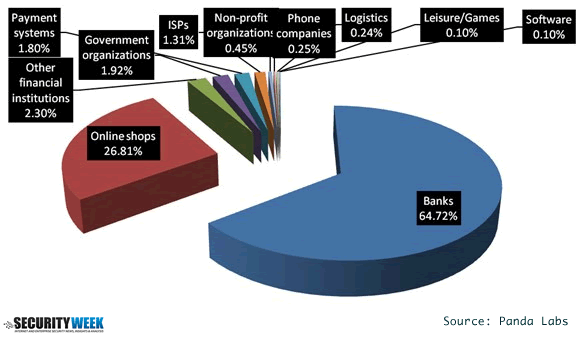In a recent investigation, it was discovered that cybercriminals are creating 57,000 new “fake” websites each week looking to imitate and exploit approximately 375 high-profile brands. eBay and Western Union were the most targeted brands, making up 44 percent of exploited brands discovered. Visa, Amazon, Bank of America and PayPal also heavily targeted by cybercriminals.
Banks comprise the majority of fake websites by far with 65 percent of the total. Online stores and auction sites came in at 27 percent, with eBay taking the spot as the No. 1 most targeted brand on the Web today.
These findings are based on a three-month long study conducted by PandaLabs, Panda Security’s anti-malware laboratory.
The 10 most Targeted brands among all fake websites tracked by PandaLabs:
1. eBay – 23.21 percent
2. Western Union – 21.15 percent
3. Visa – 9.51 percent
4. United Services Automobile Association – 6.85 percent
5. HSBC – 5.98 percent
6. Amazon – 2.42 percent
7. Bank of America – 2.29 percent
8. PayPal – 1.77 percent
9. Internal Revenue Service – 1.69 percent
10. Bendigo Bank – 1.38 percent
According to Luis Corrons, technical director of PandaLabs, “Although search engines are making an effort to mitigate the situation by changing indexing algorithms, they have so far been unable to offset the avalanche of new websites being created by hackers every day.”
Keep in mind these figures are only ones reported from a single research team, you can be sure the real number of sites like this are significantly higher.
According to a recent study announced this week, two-thirds (65 percent) of Internet users globally, and almost three-quarters (73 percent) of U.S. users have been a victim of cybercrime. The problem isn’t going away anytime soon.















